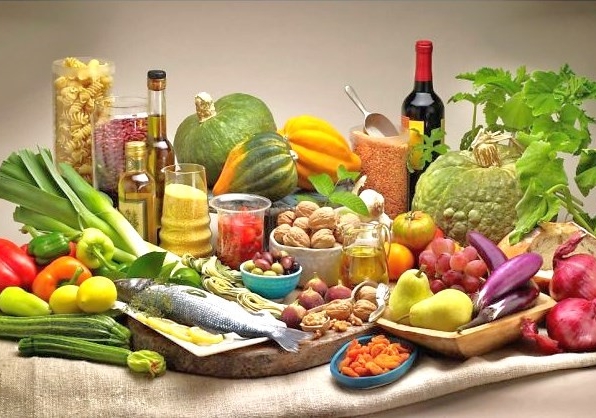In Australia, almost 70 percent of Aussies are reported to be overweight or obese. And it’s costing their national health care system a huge amount to treat resulting conditions and diseases. And researchers have discovered that popular diet plans are costing users even more!
 Another learned study that goes the long way around to come to the same conclusion
Another learned study that goes the long way around to come to the same conclusion
as dozens of others: The Med Diet is good for you but expensive. And packaged,
processed foods may be cheap, but they’re not so good for your health…
Researchers at The university of South Australia (UniSA) wanted to know what kind of impact popular diet plans were making on users’ pocket books.
“In Australia, around 12.5 million adults are overweight or obese. That’s two in every three adults, or 67 per cent of our adult population,” team member Dr. Karen Murphy says. “Not surprisingly, interest in weight loss diets continues to rise, yet very rarely are the associated costs of these programs reported. […] Understanding the costs behind the range of diets on offer is important as the financial feasibility of sticking to these programs may be questionable for certain people, including low-income earners.”
What they did
The team evaluated the composition and cost of popular commercial diet plans, and other popular plans folks follow on their own, often on advice they get online. They compared the cost of such diets to the one recommended by the official, government-endorsed Australian Guide to Healthy Eating (AGHE).
What they found
“In our research, we assessed the weekly costs of seven different meal plans and found that weekly grocery shopping of entire product units cost between $345-$625, which is substantially higher than what the average Australian spends on groceries each week,” Murphy said. The study revealed that some of the more expensive diets absorbed up to 13 per cent of users’ disposable income.
“Additionally, there tends to be a misconception that consuming a healthy diet made up of the five key food groups, like the AGHE, is too expensive, which it’s really not,” Murphy claims.
The Takeaway
Team member, PhD candidate Ella Bracci says nutrition is the first consideration when choosing a weight loss regimen. “It doesn’t matter whether you chose keto or carb-free, weight loss is always linked to calorie intake – if you reduce the number of calories you consume, you will lose weight. […] Some diets purposely restrict certain food groups — such breads and pasta — to help change unhealthy habits. But it’s also important to realise that the restrictive patterns of some diets can create unhealthy relationships with food and put you at risk of nutritional deficiency if followed without guidance from a qualified nutritionist or dietitian.”
My take
I have a number of points to make, related to, and in addition to the foregoing:
First, I want to point out that the survey we’ve been focusing on today only looked at popular diet plans, not commercial ones, such as Weight Watchers or Jenny Craig, which require users (a status often disguised under the term ‘membership’) to buy memberships and/or special food products. That’s just another cost layer on top of already expensive options.
Second, The AGHE, like Canada’s Food Guide and the Dietary Guidelines For Americans and the official eating guides of other developed nations, calls for a daily eating regimen very like the now-iconic Mediterranean Diet. We needed another study to tell us that?
Third, while the Australian researchers claim that their ideal diet is the least expensive option of all the popular regimes, the plan’s largest component is fresh fruits and veggies, which are currently (and probably perpetually) among the most expensive non-meat items in the supermarket. Or, maybe labour, transportation and related conditions are not as screwed-up down-under by COVID as they are in North America and Europe and the UK, and prices are lower…
Fourth, we live in a world where a growing number of people in every ‘developed Western economy’ are living hand-to-mouth. Many are reporting medium to severe difficulty finding enough money to their families at all, much less considering increasing the amount of expensive foods they buy. This is an expression of a well-established social-dietary pattern in which poorer folks gravitate towards unhealthy packaged and processed foods and unbalanced diets just so they can afford enough food to fill their bellies.
Unrealistic ivory tower hot air?
Maybe not. But the timing is definitely bad, and the researchers’ perception of what food costs is obviously out of whack with the prevailing reality. I say we sit on this study until the COVID era is behind us, then take another look…
Muse on that…
~ Maggie J.

